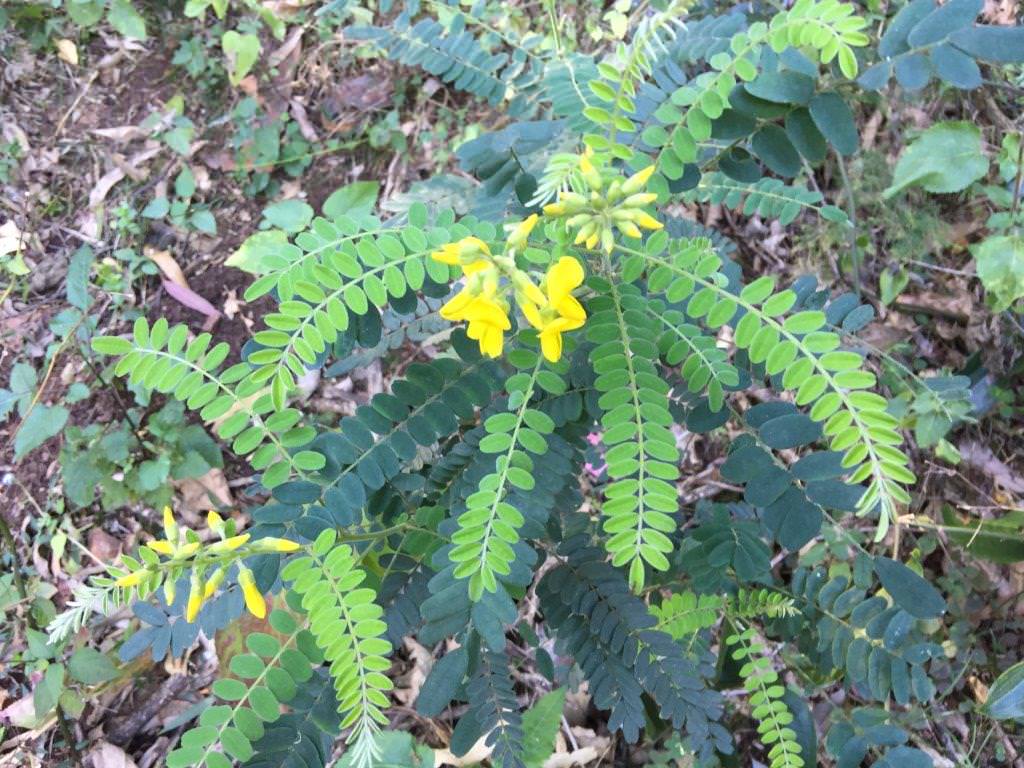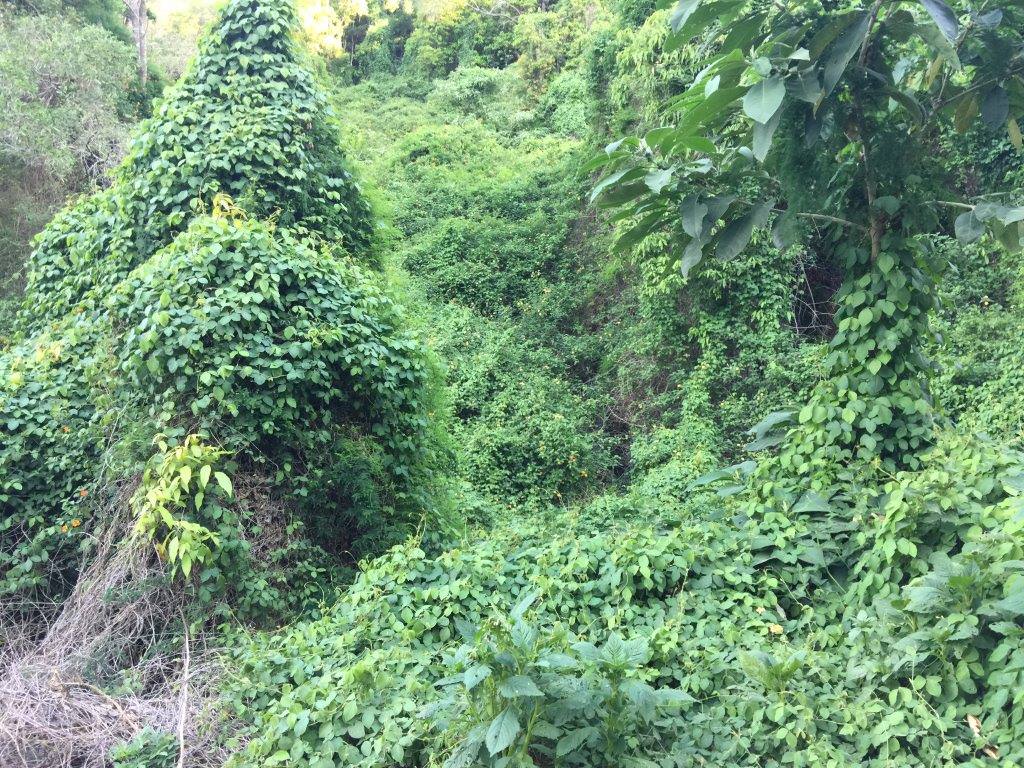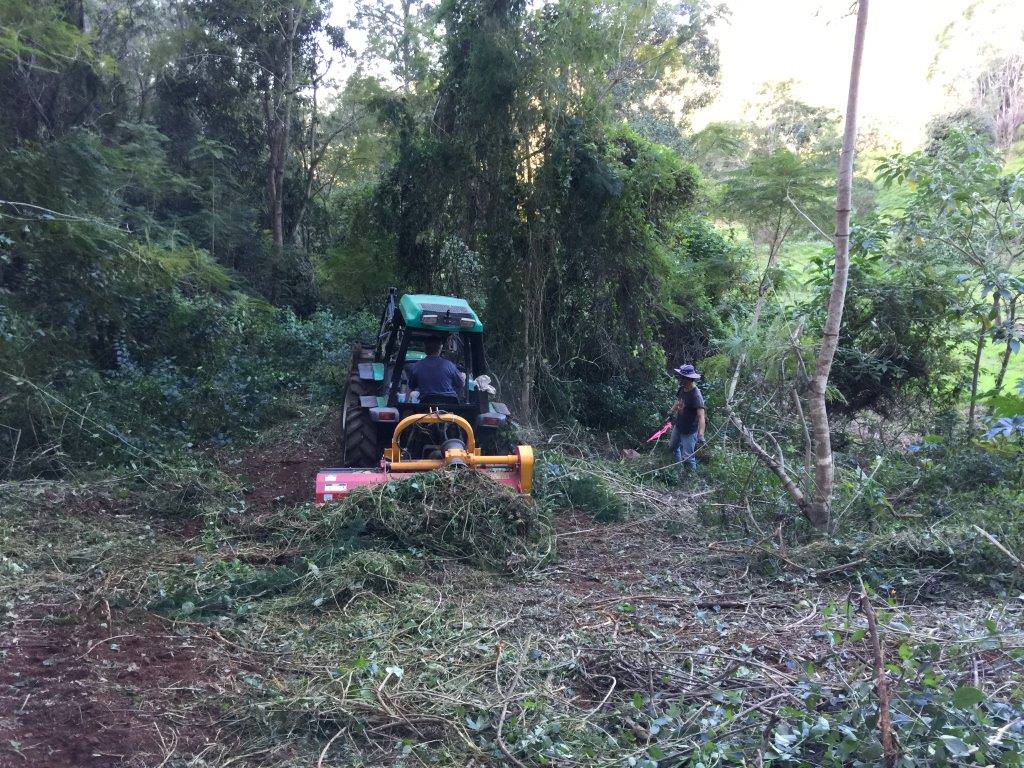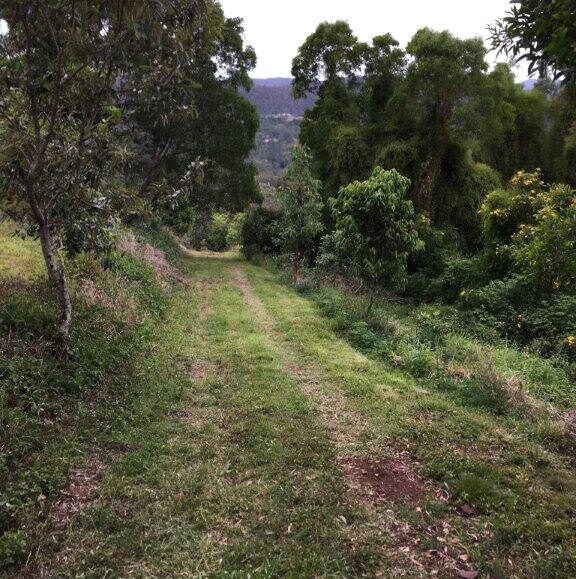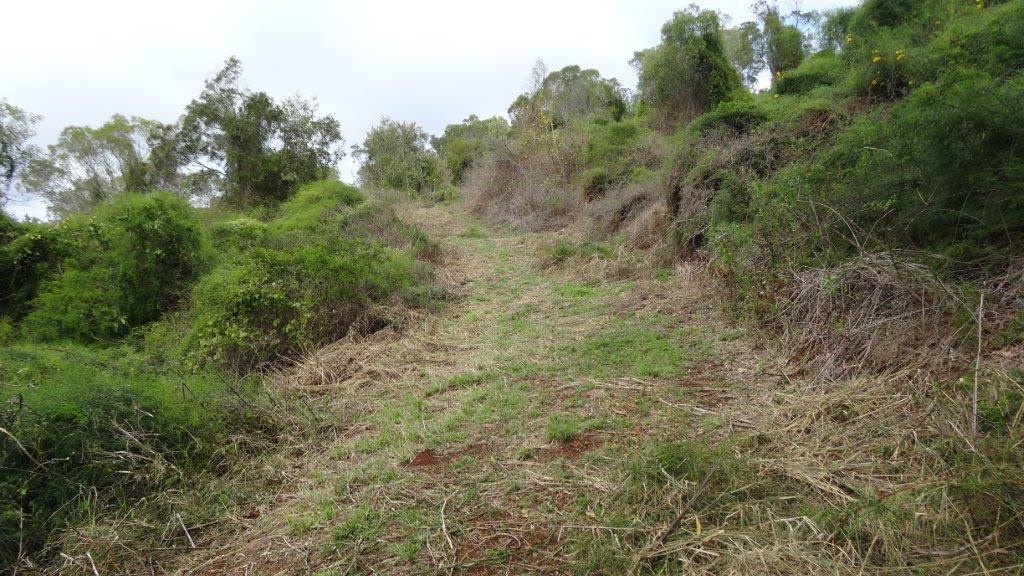I agree with Mark Twain who is credited with the wisdom, “All you need in this life is ignorance and confidence, and then success is sure.”
We certainly had plenty of ignorance and confidence when we bought Claremont at the beginning of 2016 with 52 precipitous acres of weed haven. The success part is surely coming, but so slowly! While we had come off a cattle property in the Central Tablelands of NSW and had been involved with Landcare for many years, the differences between there and Upper Brookfield are profound. A totally different environment, topography, rainfall, land use (past and present), flora, fauna and particularly weeds.
Historically, Claremont had grown bananas and 250 custard apple trees. These were abandoned about 25-30 years ago judging from the aerial maps. For a while a few horses and ponies were kept, and the weeds crept in, sometimes mown on the flatter areas, but the steeper slopes went untended. Part of the property, thankfully, has never been farmed, although I suspect that it was originally logged. We call this the Western Forest. It has a wonderful selection of mature trees with some understory species. It suffers to a degree with lantana, asparagus fern (climbing and basket) and other goodies but responds very well to spot spraying and hand clearing. Sadly, we have not been able to give it the time it deserves because the remaining property is Class Red Urgent.
By the time we arrived the Banana-lands (as we called the rest of the farm) was under a head height and/or house height blanket of asparagus ferns, lantana, glycine, ochna, yellow bell, Easter cassia and every other conceivable weed. Part of the garden was also hidden under the lantana et. al. and for the first couple of years, as we slowly cleared it, we discovered the brickwork, paths and rock walls that were part of the original landscaped garden.
Our obvious focus needed to be the Banana-lands. We had several issues.
How not to get overwhelmed by the task ahead. This is a crucial point. It is easy to dive in with wild enthusiasm only to run out of puff at the first hurdle. We suffered from this to some extent but now we realise this is a 5-year, 10-year, lifetime project and that nobody is going to wave a magic wand.
We learned how to roll with the punches. Just when we think we are making progress with the weeds, we have a wet summer and they all come back. It’s having to accept the two steps forward, one step back philosophy. A wet summer brings landslips and erosion even in areas that have been carefully reconstructed with dam walls, slipways, gully reconstruction and roads.
When to plant trees is a bit of a gamble. A good planting season can be followed by a dry time when the trees struggle to survive. Mind you, that was one thing we were used to in our previous life when seasons were a lot drier on average. A very wet summer can find the weeds exploding and growing all over the new trees unless we are quick to eradicate them. I am sure everyone has their own comparable stories.
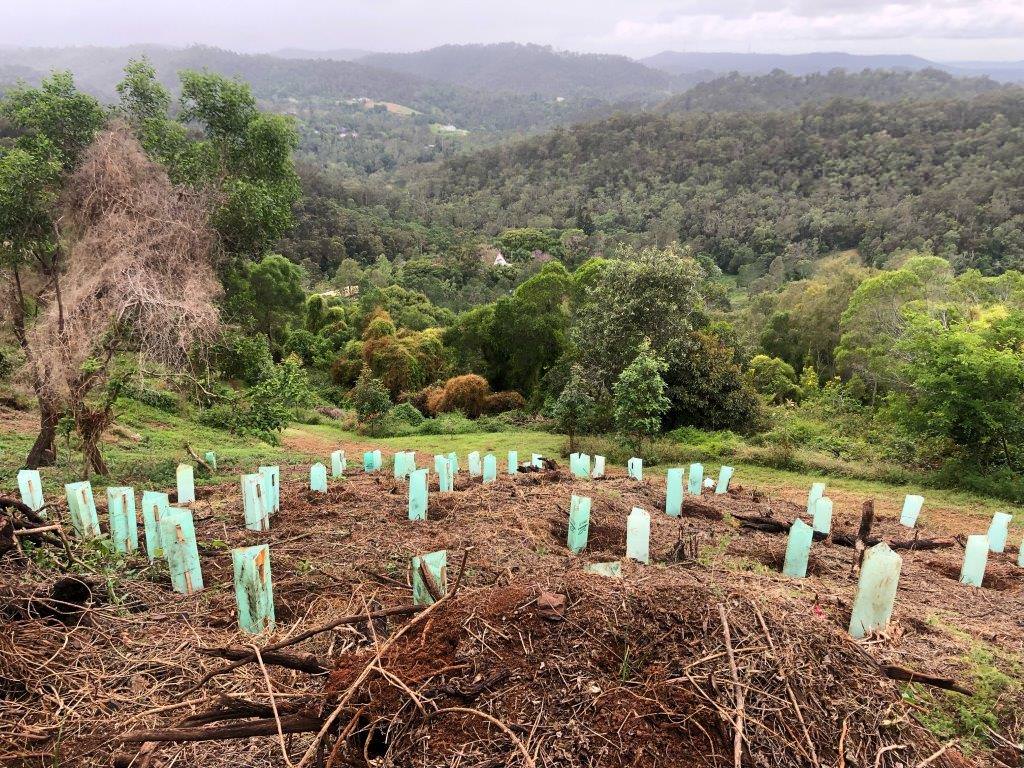
Bush regeneration, land rehabilitation, weed control, mowing and the plethora of chores that are associated requires manpower. No question. We were so fortunate that two of our daughters and their husbands stepped up to the plate and have become as passionate about the Claremont Project as we are. It has become a concerted family team effort and without their input we would struggle.
Other assistance has come from Land for Wildlife, especially our ever helpful, enthusiastic and knowledgeable program officer, Cody Hochen, and the Moggill Creek Catchment Group. We have been grateful to receive several Community Conservation Assistance grants from Brisbane City Council, which have been an enormous bonus both because there is extra work done on the ground and because there is a great feeling of support knowing we are not in this alone.
On a more practical level we had to decide where to start. The Banana-lands, yes. But they were virtually inaccessible. From talking to previous owners and reviewing the aerial maps we could see there was a system of roads and tracks under the lantana. Identifying and clearing them would give us access to more of the property.
We had a contractor come in to mow around the house, sheds and the dam, but it wasn’t until we purchased our own tractor, mulcher and bucket that we made real progress. We were fortunate that Alan’s experience with farm machinery could be put to effective use.
It was still slow going and we were really working blind. We had to push through firstly by foot with the old machete getting a real work out. The country for the most part is very steep with some of the roads having an unforgiving drop-off on one side. Miscalculation of the route could have unfortunate results. This has made a real difference even though there are still places we have yet to get to.
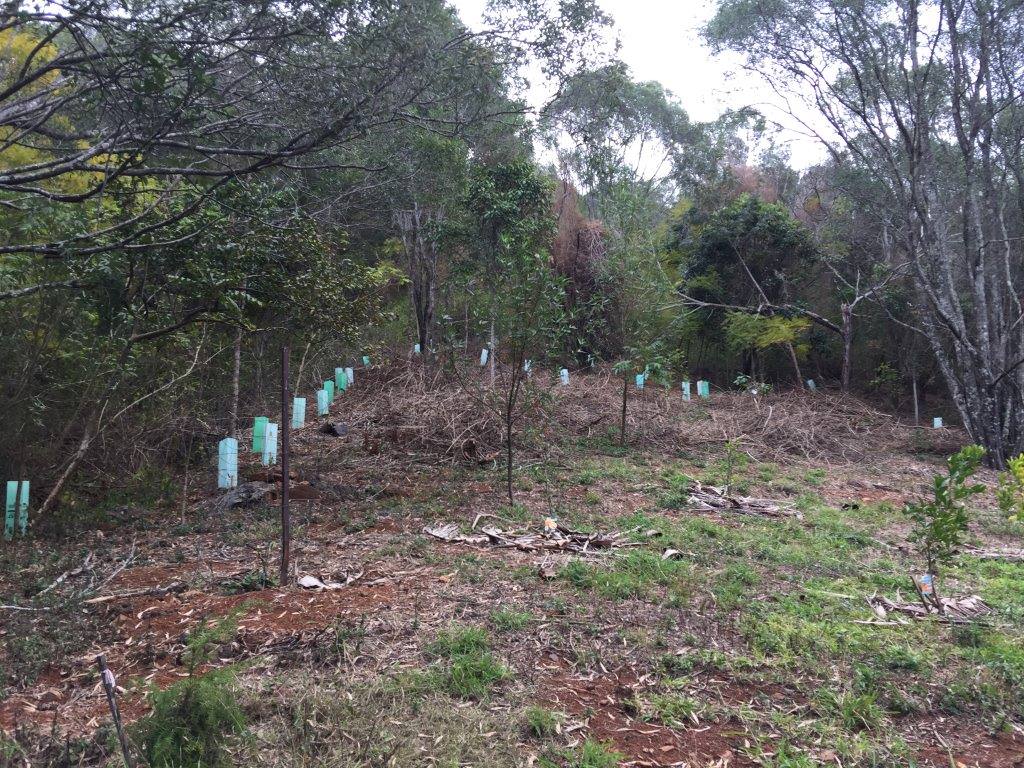
We have developed a flexible approach to weeds involving a combination of mowing, mulching, spraying, hand grubbing and whatever seems appropriate at the time. At times we take extra care because we get a feel if a certain area is likely to have native species struggling under the blanket of weeds. Trees completely obscured with a curtain of suffocating vines need care. Probably the most satisfying aspect is to clear the vines and see the trees underneath start to thrive.
Some of the land doesn’t have much of seed bank for native species and so we have embarked on a planting program as well. But it is interesting that in other areas we can see pioneer succession in play: black wattles, silky oaks, red kamalas, red ash, native hyacinths, some wonderful stands of Moreton Bay ash and more recently foambarks, celerywoods, and smaller understory species. And with Cody’s assistance we are slowly discovering that we have a wealth of mature trees and other smaller species particularly in the Western Forest.
Exciting finds have been an area of the threatened Sophora fraseri with its delicate yellow pea blossom, and a healthy Scrub Turpentine (Rhodamnia argentea) one of the species that are highly susceptible to myrtle rust and is listed as Critically Endangered. There is always the expectation that there is more to discover. A wish is to someday have a detailed inventory of all the flora.
Fascination with our new environment contains other elements. Wildlife is elusive but present, particularly the birds. With binoculars to eyes and the willing help of Cody, Deborah Metters and other friends (not to mention books and apps) we are slowly building up our sightings. To date we have logged 84 species over the last seven years and know there are more to be identified. We are ever hopeful that, as we rehabilitate Claremont more fauna will find their way in and make a home, or a visit, here.
Claremont and the work our family does here has become a life-absorbing project. To see small successes mount up is extraordinarily pleasing and they are sufficient to keep us motivated – that and the wonderful community and Land for Wildlife support. I continue to be hopeful that Mark Twain’s “success” will indeed come to pass. Article by Colleen Watts Land for Wildlife member Brookfield, Brisbane
Article by Colleen Watts
Land for Wildlife member
Brookfield, Brisbane

